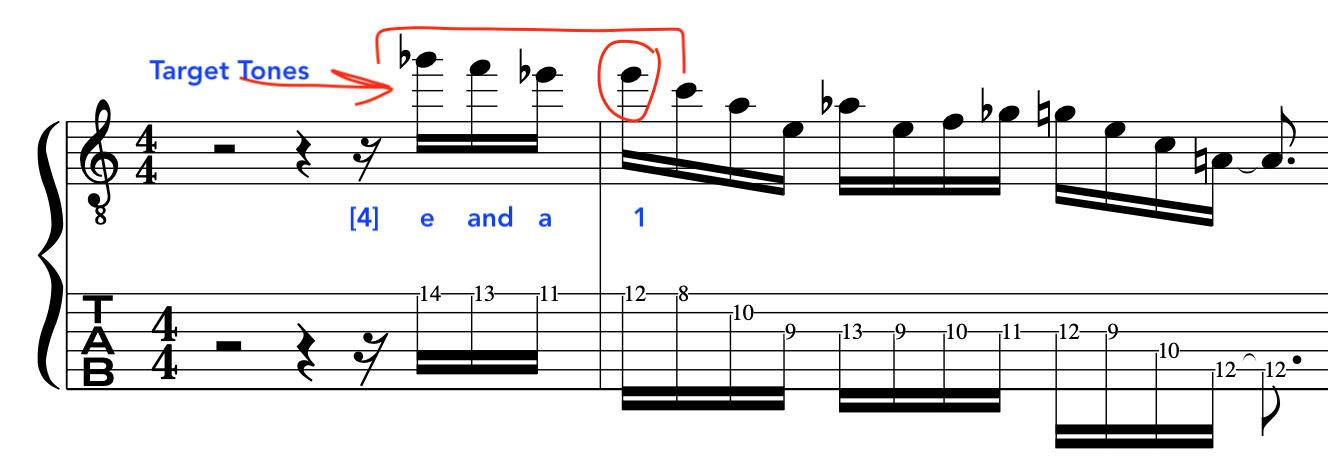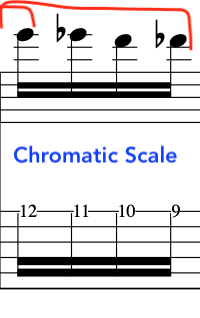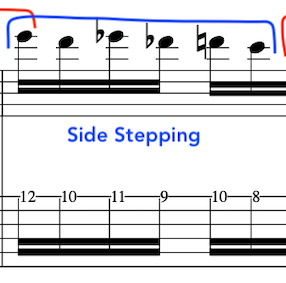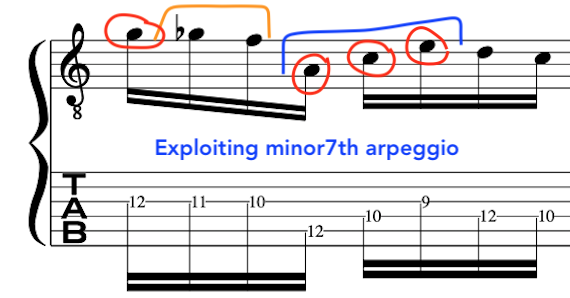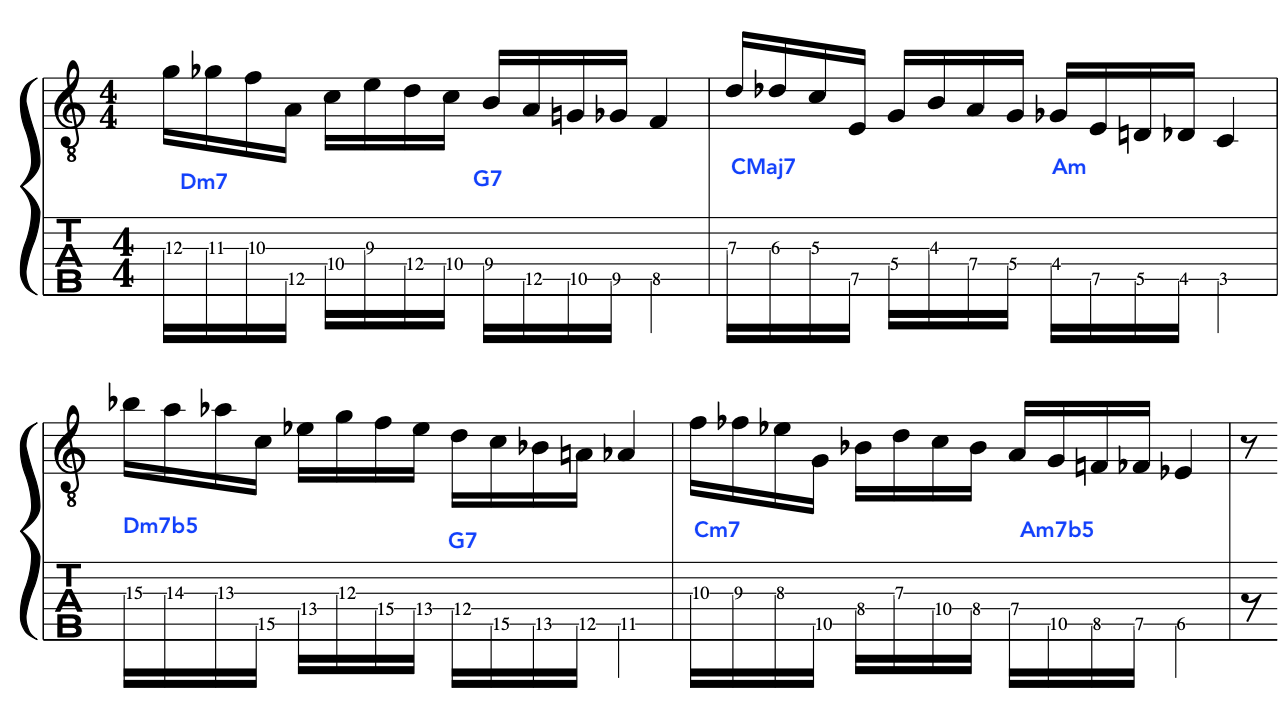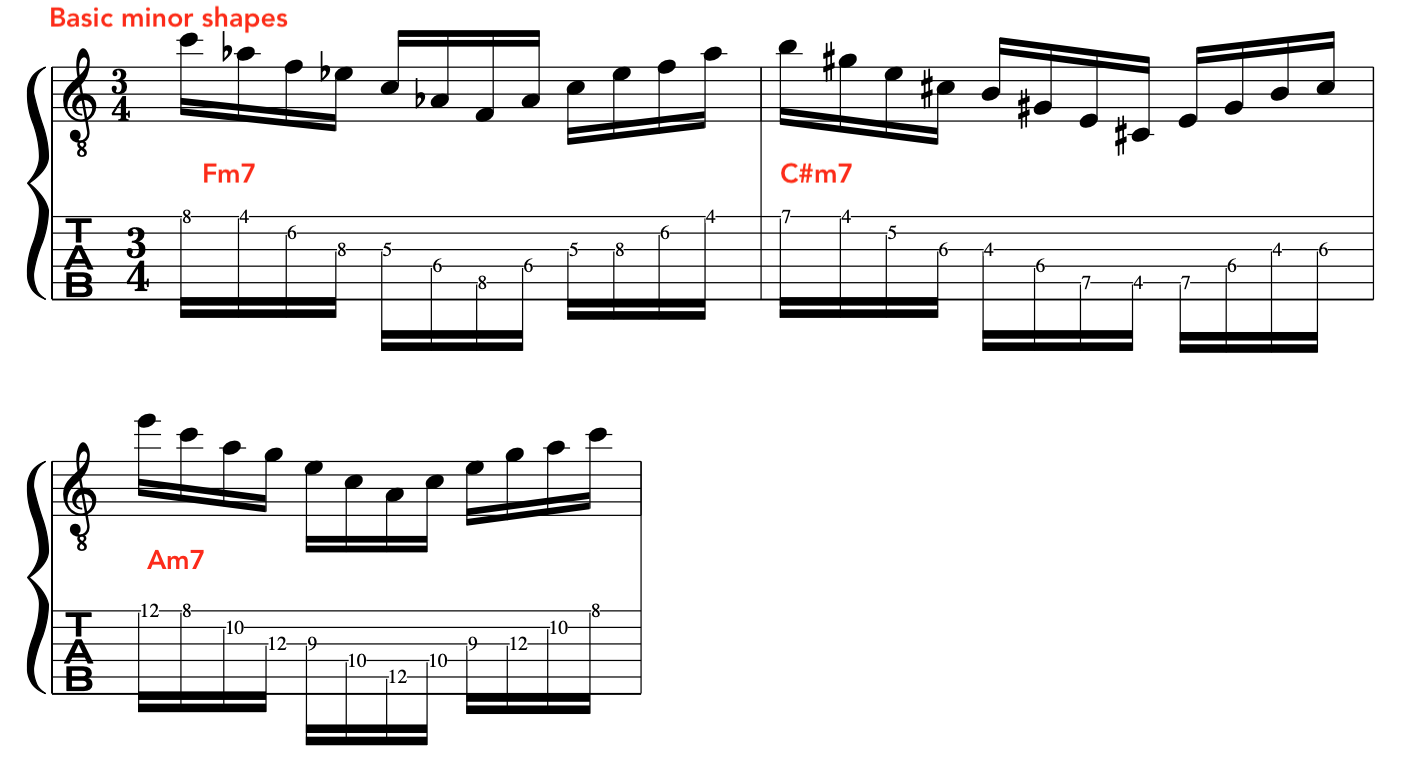
Hi Guys,
Today, a look at Pat Martino’s use of the melodic minor scale. We will employ the same jazz tools as the previous video.
The Melodic Minor Scale
As, you can see below the melodic minor scale is the same as the major scale but with a flattened third.
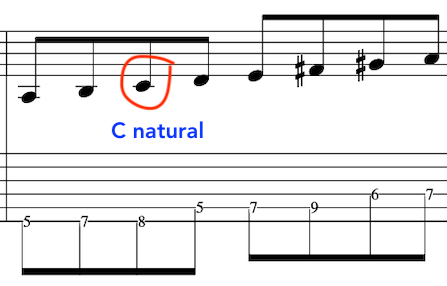
This scale works well, when played over altered Dominant chords.
In this case we have an Ab7 chord that is then altered. To play over this we employ the melodic minor scale by playing it a half step up.
So, for Ab altered we can exploit the A melodic minor scale as it is a half step up.

Below, the Ab altered chord:
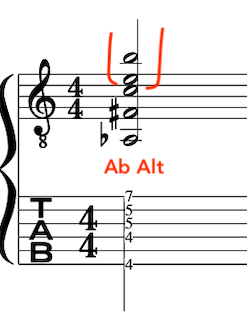
Jazz chromatic Tools:
To begin with, let’s use our old friends the “Target tones”.
Once again [as in last lesson] we will start with an upbeat. This sets the rhythmic flow of the chromaticism and the jazz phrasing. From here we will employ some simple chromatic scale tones.
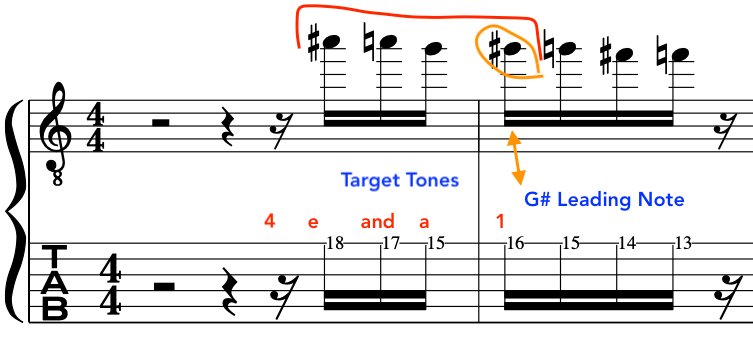
We will now exploit the phrase by bringing in an arpeggio for melodic effect. [Also, notice, the flattened 6th and the major 3rd interval with chromatic descending movement].
Rhythmically, we start on the off beat once again.
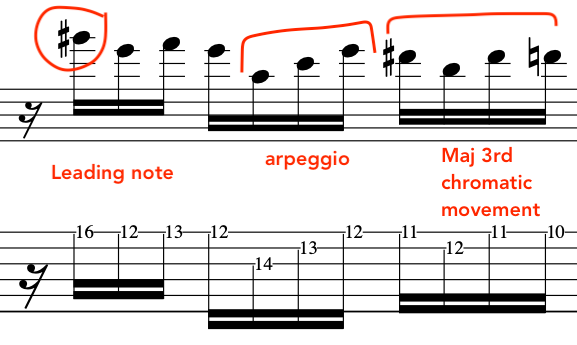
In the next bar we will employ some basic melodic minor scale before adding our colourful chromaticism.
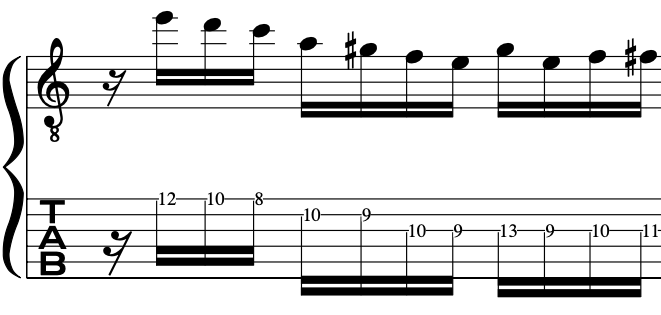
Now, we will bring in our chromatic set up which is a mixture of target tones and chromatic scale. [Notice, we end the phrase on the leading note of A melodic minor scale the G#].
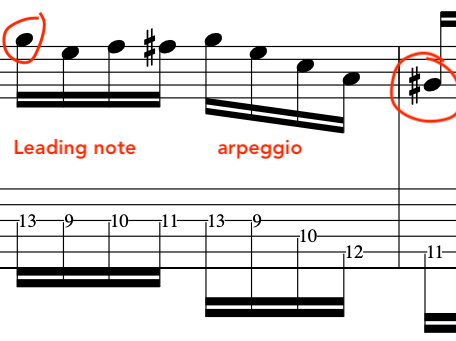
VARIATION:
We could also fit in our classic jazz melody/motif from our previous lesson.
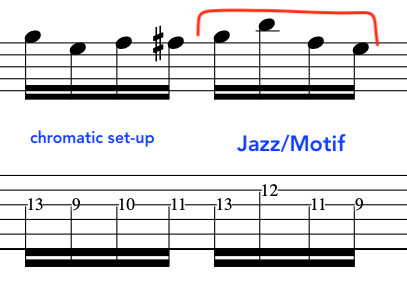
On a last note, we can also ascend with our target tones and chromatic set ups:
EXAMPLE:
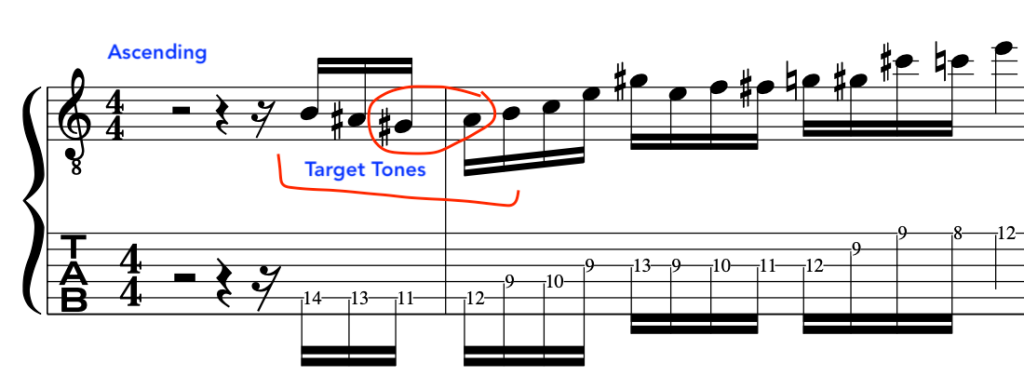
FULL EXAMPLE:
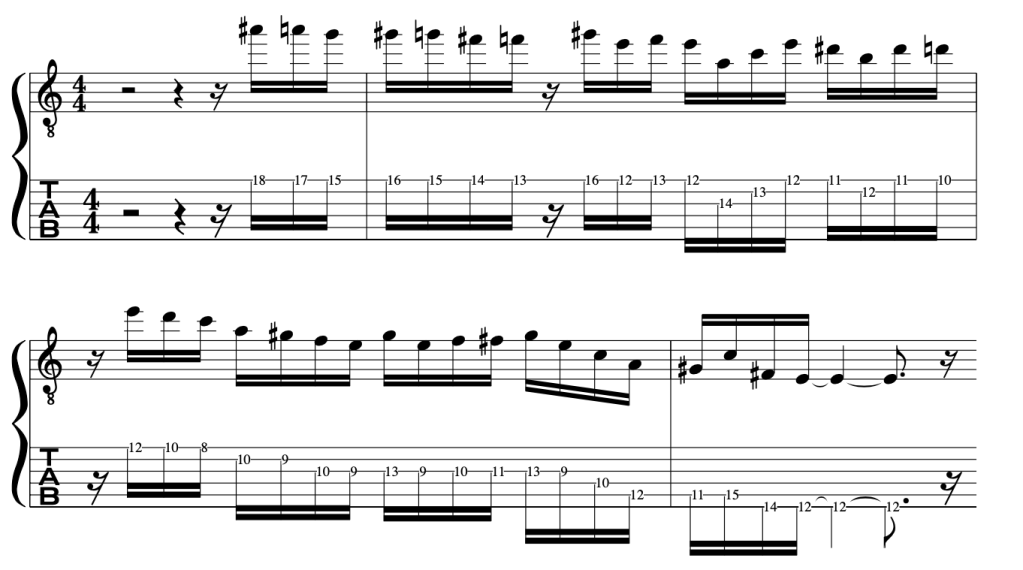
FREE PDF DOWNLOAD:
If this lesson was of use to you, then please Subscribe to us on YouTube below, Thanks!

